Quick Tips for Driving Over Speed Bumps
- Slow down well in advance, never brake sharply as you're crossing the bump
- Keep your speed between 2–20mph, depending on the bump type
- Drive squarely over the bump, avoid angling your car, which can increase stress on suspension
- In a manual car, shift to the recommended lower gear before reaching the bump
- Avoid harsh acceleration immediately after crossing
- Stay alert for speed bump signs ahead
- Use extra caution if driving a low ground clearance vehicle
What are speed bumps?
Speed bumps are 'traffic calming measures' that dissuade drivers from exceeding the speed limit on a particular stretch of road, with a view to reducing injuries and fatalities. Studies have shown that driving at lower speeds gives the driver more time to react to a hazard. Additionally, someone struck at 20mph will have less severe injuries and will be less likely to die compared to if they were hit at 40mph.
As a driver, it's important to know how to drive over a speed bump properly, to prevent damage to your vehicle, and to avoid a bumpy ride.
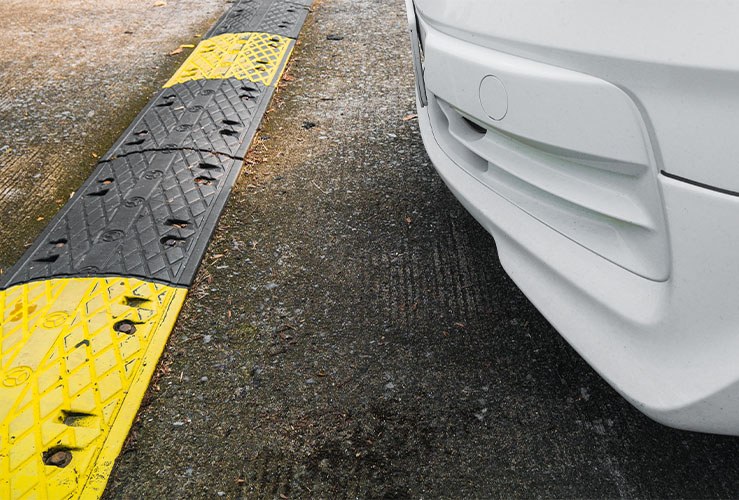
Driving over speed bumps: Manual vs automatic
Drivers of manual transmissions need to note their gear and their speed as they drive over speed bumps.
Drivers of automatic transmissions only need to be aware of their speed as they approach a bump.
Low ground clearance vehicles
Vehicles with low ground clearance, particularly sports cars and some modified vehicles can struggle to drive over speed bumps safely. The reduced space between the undercarriage and the road increases the risk of scraping the exhaust, bumper, or suspension components.
Drivers of these vehicles should approach speed bumps very slowly, ideally at an angle if space allows, to minimise contact and avoid costly damage.
Can a Speed Bump Damage My Car?
Yes, especially if you drive over them too quickly. Speed bumps can cause damage to your car’s suspension, shock absorbers, tyres, exhaust system and even your undercarriage. This is particularly true for narrow or steep bumps and low-slung vehicles.
To avoid damage:
- Always approach bumps slowly and squarely
- Stick to the recommended speed limit
- If in doubt, crawl over in first gear
Regular exposure to speed bumps can also prematurely wear out suspension components, so it’s worth checking your vehicle regularly if you drive in areas with lots of bumps.
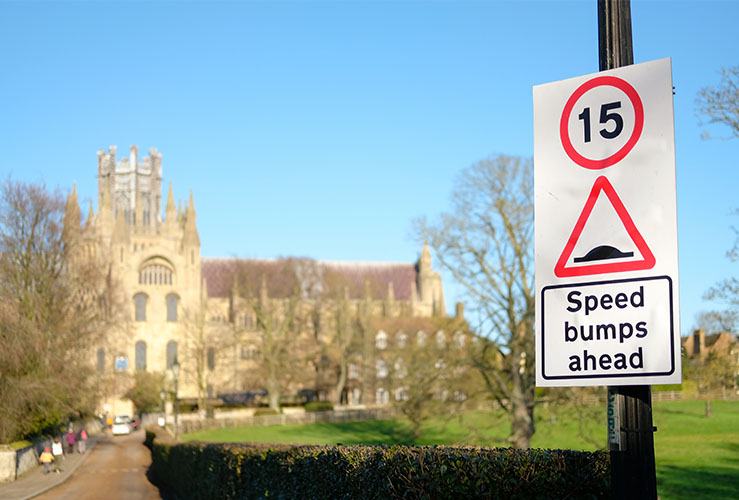
Speed bump signs
Speed bumps are denoted by a sign featuring a black hump in a red triangle. They may be accompanied by rectangular signs stating how far away the hump is.
Anticipating speed bumps
It's important to look at the road ahead as a speed bump nears, adjusting your speed and course in line with UK speed bump regulations. Manual drivers will need to choose the right gear.
The three main types of speed bump
In the UK, speed bumps are sometimes referred to as ‘sleeping policemen’; decades ago the shape and height of speed bumps more closely resembled a person. They are used to enforce the speed limit.
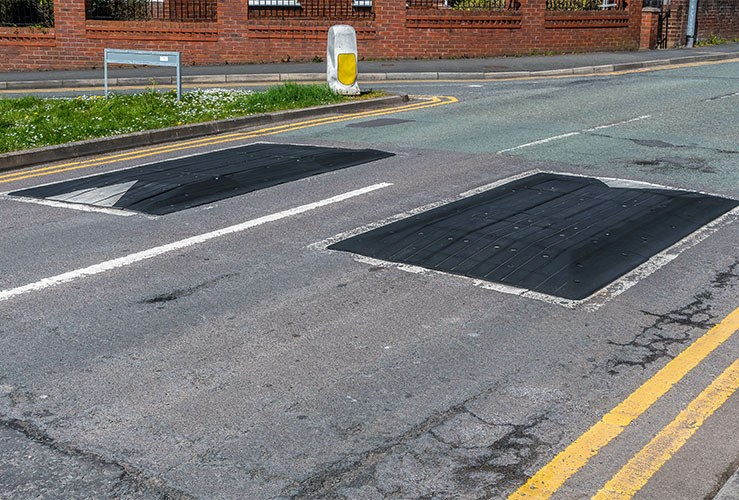
Single-lane, small, square bumps
These speed bumps are raised squares of tarmac (sometimes rubber) with sloped edges. They appear in pairs with one square in each lane. This bump forces the drivers to slow down and align the wheels so they don't hit the highest point of the bump.
- Speed: 15-20mph
- Gear: 2nd
NB: If there are a series of upcoming speed bumps, it may not be worth going into third gear (just stay in second).
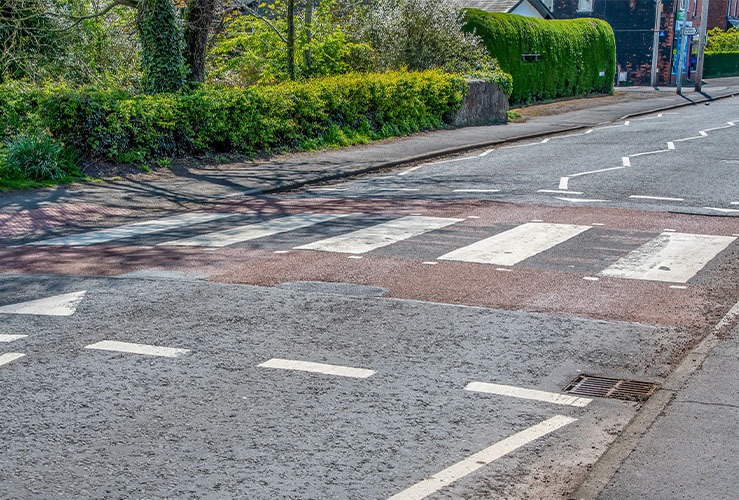
Double-lane, wide, unbroken bumps
These wide speed bumps extend across the entire width of the road. Often made of bricks or tarmac they can cause damage to your vehicle if you cross them at too high a speed. However, because they are wider, they tend to cause less damage to vehicles than narrow bumps (see below). They may also form a pedestrian crossing.
- Speed: 10mph
- Gear: 2nd
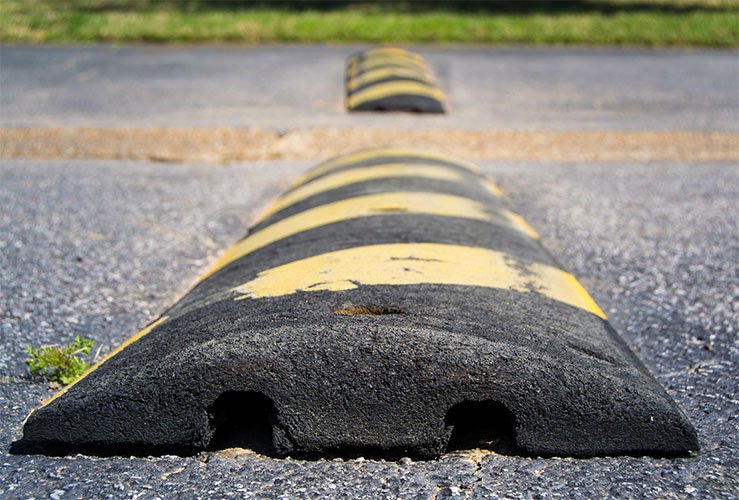
Narrow speed bumps
These speed bumps potentially cause the most damage to your vehicle if driven over at too high a speed. They are often in car parks and outside schools and either can extend across both lanes or take the form of two separate bumps. You'll need to drastically reduce your speed to below 5mph in order to avoid damage - and an uncomfortable bump.
- Speed: 2-5mph
- Gear: 1st
What is a Sleeping Policeman?
The term "sleeping policeman" is an informal British nickname for a speed bump. It originated in the mid-20th century, referencing the bump’s role in enforcing road discipline much like a police officer, only horizontal and unmoving. Early designs were particularly high and rounded, resembling someone lying down across the road, hence the name. They also go by the name of a road hump.
Worried road humps might damage your suspension or exhaust?
Don’t get caught off guard! Get affordable breakdown cover today and drive with peace of mind, no matter the bumps in the road.
Last Reviewed: October, 2025




